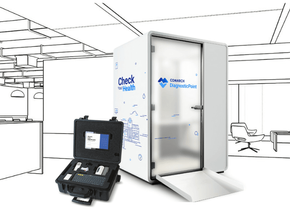Hastings Direct: Levelling up with Snowflake

We speak to the Chief Information Officer at Hastings Direct, Sasha Jory, about how the UK-based insurer has transformed its technology stack, migrating from its legacy platform and integrating with Snowflake.
Tell us about your current technology stack.
In November 2022, we migrated from a traditional data centre to Microsoft Azure Cloud. We are on a modern technology stack and are digital at the core. From a data perspective, we have migrated off all our legacy platforms and now use a modern data platform, Snowflake.
EY has a global alliance with Snowflake, and together, they have supported us in unlocking significant value across the organisation. We have a partner-first mindset at Hastings Direct, and given innovation and the speed of technology change, work closely with both Snowflake and EY to solve particular problems.
We share our strategy, and ideas and collaborate to improve knowledge transfer, so we’re constantly upgrading and offering our people the opportunity to learn new skills and to develop their technology capability.
Before you implemented Snowflake, what issue(s) were you trying to solve?
Before Snowflake, our data platform was on-premise, and we were having challenges with performance, scalability, resilience, and cost. Data processing was taking too long, and the existing technology simply couldn’t keep up with our business requirements.
For example, end-of-month reporting would’ve previously taken four days, and end-of-year reporting would take a full two weeks. During this time, we would have to stop all other access to the system, meaning our team couldn’t carry out basic business intelligence (BI) reporting.
With Snowflake, we can do any type of reporting at any time of the day, without restricting user access. We have saved a huge amount of time and manual effort.
Data is critical to insurance, and we were also finding it increasingly difficult to meet the demand for storage as well as computing power to support our ambitions. The legacy platforms were not stable, and we were having reliability issues.
Our underwriting team couldn’t access the data they needed to perform their roles effectively. For example, if a customer was applying for insurance, our underwriting team only had access to the past six months of data.
With Snowflake, the team now has access to the past 6 years of data, which helps us to minimise the underwriting risk when offering a quote.
Tell us about migrating over to Snowflake, how long did it take and were there any challenges?
We wanted to move quickly to solve the above challenges and therefore chose to progress with a lift-and-shift approach. This made the process quicker but has meant that we are now progressing with transformation and improvement activity.
Overall, it took us two years to migrate off Hadoop and Netezza and deliver a Cognos upgrade to enable continuous delivery of our Management and Business Information. At the same time, we migrated to Microsoft Azure, so we had several moving parts to coordinate.
What have been the biggest benefits of this project?
We have been able to provide a modern platform to support our data teams, who can now achieve better results at a quicker and more efficient pace. The constraints of the past have been removed and our current technology infrastructure now better supports our colleagues and acts as a reason for new employees to join us.
A key example of this is our use of automation when onboarding new customers. More journeys are completed digitally, freeing up our sales team’s time to focus on tasks that will drive business value.
With better access to data, we have seen a higher rate of completion in securing new customers, meaning we are more profitable.
Working with Snowflake has also meant we can reduce our risk profile. We receive hundreds of thousands of quote requests per day, but what was key was understanding how to win more of them.
Ultimately, we need to maintain a healthy risk profile. Snowflake allows us to dynamically recalculate risk at any time during the day, helping us to offer better policies to potential customers.
What types of data is Hastings Direct bringing into Snowflake?
Everything you can imagine. This includes policy, billing, and claims data to telematics data and data that supports our front-line colleagues in making operational decisions. In addition, data that supports our customers by offering them the best prices or analysing their feedback – Hastings Direct is a truly data-driven company.
Our data strategy is to land all our data in Snowflake. Of course, our actual data strategy has defined raw, cleansed, and curated layers and we are building data products and data services.
It is helping the business ingest data more quickly from open-source data sets to run standard data files from suppliers. However, more than anything it is giving us the ability to stay competitive in data.
What is Hastings Direct trying to achieve with its data?
Insurance is a data-driven industry and we need to have access to data to deliver the best pricing to our customers and to ensure that we are managing our risk and underwriting in line with the data that we have.
We use data to support our pricing and fraud models and real-time decision-making. Data is at the heart of all that we do, and being able to interrogate and use data with speed and confidence makes a substantial difference in an extremely competitive market. Our goal is to grow our policies by around 60% in two years - data will be key to this.
How is Hastings Direct’s data strategy helping it take advantage of changes in the market, for example, artificial intelligence?
By having a constraint-free Data Cloud, we can use our capabilities in machine learning (ML) and artificial intelligence (AI) to drive better insights.
This in turn is supporting customer experience and ensuring that we can update our information to stay relevant, offering our customers the best possible product and pricing based on the data that we have. Building data quality into our pipelines means that any advances such as AI, should lead to better quality decisions.
How does using Snowflake help you stay competitive within the insurance industry?
Having Snowflake means that we have no physical constraints. We can move at pace to ingest and use data from multiple sources. We can run large queries with no performance impact, and we can use ML and AI to bring even more value to our customers.
We no longer have any restrictions on data creativity, and this gives us the freedom to try new things and to use data most effectively. Innovation and data readiness will be key to winning in insurance
The insurance industry is highly regulated - how does Snowflake support Hastings Direct in adhering to these regulations, such as the recently introduced pricing rules introduced by the FCA?
The pricing rules introduced by the FCA were implemented to ensure fair and consistent pricing during the application process. As a result, insurance companies can no longer offer new customers a cheaper quote than they would offer existing customers.
For some insurance companies, this change would have had a huge impact. However, because we had done all of the work in the lead-up with Snowflake, we were able to implement these changes with zero disruption. We adhere to all regulatory requirements and have been able to build automated reporting for GIPP.
What’s next for Hastings Direct in terms of business and technology innovations/direction?
Simply, more data, more insights, and more creativity. We will use AI, ML and automation where we feel it will bring benefits. We are also working hard on cataloguing our data and continuing to transform with Snowflake following the lift and shift approach.
We aim to create a strong community of pricing, data and analytics people across Hastings Direct who ensure we have excellent quality data that we can use and share with ease.
******
For more insights from InsurTech Digital, you can see our latest edition of the InsurTech Digital here, or you can follow us on LinkedIn and Twitter.
You may also be interested in our sister site, FinTech Magazine, which you can also follow on LinkedIn and Twitter.
******
BizClik is a global provider of B2B digital media platforms that cover Executive Communities for CEOs, CFOs, CMOs, Sustainability Leaders, Procurement & Supply Chain Leaders, Technology & AI Leaders, Cyber Leaders, FinTech & InsurTech Leaders as well as covering industries such as Manufacturing, Mining, Energy, EV, Construction, Healthcare + Food & Drink.
BizClik – based in London, Dubai, and New York – offers services such as Content Creation, Advertising & Sponsorship Solutions, Webinars & Events.







